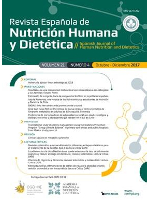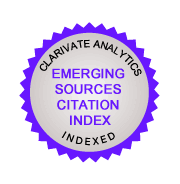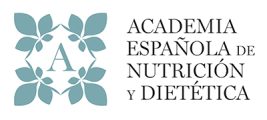Strategies for reducing consumption of sweetened beverages
DOI:
https://doi.org/10.14306/renhyd.22.2.426Keywords:
Beverages, Carbonated Beverages, Sugar, Drinking Behavior, Obesity, Behavior Therapy, Health PromotionAbstract
The increase in the consumption of sweetened beverages such as soft drinks or soda, juices, flavored milks and energy drinks have been related to the prevalence of overweight, obesity and metabolic diseases worldwide. Therefore, various strategies have been established in order to reduce their consumption. The objective of the present review was to analyze the strategies applied to reduce the consumption of sweetened beverages. We searched the PubMed and Science Direct databases, identifying 192 potential articles, of which 184 were excluded, analyzing 8 investigations in this review. Several techniques were identified to reduce consumption of sweetened beverages, focused on the modification of eating behavior, in which it is proposed to consider the multiple factors that influence food consumption, to establish multidisciplinary strategies that have as their central axis work in the promotion of nutritional education, to guarantee a better selection and food consumption in the populationReferences
(1) Bellisle F, Drewnowski A, Anderson GH, Westerterp-Plantenga M, Martin CK. Sweetness, satiation, and satiety. J Nutr. 2012;142(6):1149S-54S.
(2) Kaufer-Horwitz M, Garnica-Correa M. La nutrición en México: pasado, presente y perspectiva. En: Casanueva E, Kaufer-Horwitz M, Pérez-Lizaur AB, Arroyo P, editores. Nutriología médica. 3ª ed. México, D.F.: Editorial Médica Panamericana; 2008. p. 25-57.
(3) Mattes RD. Beverages and positive energy balance: the menace is the medium. Int J Obes. 2006;30(S3):S60-5.
(4) Singh GM, Micha R, Katibzadeh S, Lim S, Ezzati M, Mozaffarian D, et al. Abstract MP22: Mortality Due to Sugar-Sweetened Beverage Consumption: A Global, Regional, and National Comparative Risk Assessment. Circulation. 2013;127(Suppl 12):AMP22.
(5) Tucker RM, Mattes RD. 10 - Satiation, satiety: the puzzle of solids and liquids. En: Satiation, Satiety and the Control of Food Intake [Internet]. Cambridge, UK: Woodhead Publishing; 2013. p. 182-201. (Woodhead Publishing Series in Food Science, Technology and Nutrition). Disponible en: https://www.sciencedirect.com/science/article/pii/B9780857095435500104
(6) Silva P, Durán S. Bebidas azucaradas, más que un simple refresco. Rev Chil Nutr. 2014;41(1):90-7.
(7) Gutiérrez CL, Vásquez-Garibay E, Romero-Velarde E, Troyo-Sanromán R, Cabrera-Pivaral C, Ramírez O. Consumo de refrescos y riesgo de obesidad en adolescentes de Guadalajara, México. Bol Med Hosp Infant Mex. 2009;66(6):522-8.
(8) Anderson GH. Sugars, sweetness, and food intake. Am J Clin Nutr. 1995;62(1 Suppl):195S-201S.
(9) Stubbs RJ, Mazlan N, Whybrow S. Carbohydrates, appetite and feeding behavior in humans. J Nutr. 2001;131(10):2775S-2781S.
(10) Gómez-Miranda LM, Jiménez-Cruz A, Bacardí-Gascón M. Estudios aleatorizados sobre el efecto del consumo de bebidas azucaradas sobre la adiposidad en adolescentes y adultos; revisión sistemática. Nutr Hosp. 2013;28(6):1792-6.
(11) Hernández-Cordero S, Popkin BM. Impact of a Water Intervention on Sugar-Sweetened Beverage Intake Substitution by Water: A Clinical Trial in Overweight and Obese Mexican Women. Ann Nutr Metab. 2015;66(Suppl 3):22-5.
(12) Losasso C, Cappa V, Neuhouser ML, Giaccone V, Andrighetto I, Ricci A. Students’ Consumption of Beverages and Snacks at School and Away from School: A Case Study in the North East of Italy. Front Nutr. 2015;2:30.
(13) Vizmanos B, Hunot C, Capdevila F. Alimentación y obesidad. Invest Salud. 2006;VIII(2):79-85.
(14) Eertmans A, Baeyens F, Van den Bergh O. Food likes and their relative importance in human eating behavior: review and preliminary suggestions for health promotion. Health Educ Res. 2001;16(4):443-56.
(15) Lemmens SG, Martens EA, Born JM, Martens MJ, Westerterp-Plantenga MS. Lack of effect of high-protein vs. high-carbohydrate meal intake on stress-related mood and eating behavior. Nutr J. 2011;10:136.
(16) Rotger A, Ferret A, Manteca X, Ruiz de la Torre JL, Calsamiglia S. Effects of dietary nonstructural carbohydrates and protein sources on feeding behavior of tethered heifers fed high-concentrate diets. J Anim Sci. 2006;84(5):1197-204.
(17) Wangsness PJ, Dilettuso BA, Martin RJ. Dietary effects on body weight, feed intake and diurnal feeding behavior of genetically obese rats. J Nutr. 1978;108(2):256-64.
(18) Reicks M, Banna J, Cluskey M, Gunther C, Hongu N, Richards R, et al. Influence of Parenting Practices on Eating Behaviors of Early Adolescents during Independent Eating Occasions: Implications for Obesity Prevention. Nutrients. 2015;7(10):8783-801.
(19) García-Almeida JM, Casado GM, García J. Una visión global y actual de los edulcorantes. Aspectos de regulación. Nutr Hosp. 2013;28(Suppl 4):17-31.
(20) Aggarwal D, Sabikhi L, Sathish Kumar MH. Formulation of reduced-calorie biscuits using artificial sweeteners and fat replacer with dairy–multigrain approach. NFS J. 2016;2:1-7.
(21) Domingos AI, Vaynshteyn J, Sordillo A, Friedman JM. The reward value of sucrose in leptin-deficient obese mice. Mol Metab. 2014;3(1):73-80.
(22) Durán S, Quijada M, Silva L, Almonacid N, Berlanga M, Rodríguez M. Niveles de ingesta diaria de edulcorantes no nutritivos en escolares de la región de Valparaíso. Rev Chil Nutr. 2011;38(4):444-9.
(23) Hill SE, Prokosch ML, Morin A, Rodeheffer CD. The effect of non-caloric sweeteners on cognition, choice, and post-consumption satisfaction. Appetite. 2014;83:82-8.
(24) Shankar P, Ahuja S, Sriram K. Non-nutritive sweeteners: review and update. Nutrition. 2013;29(11-12):1293-9.
(25) Durán S, Record J, Encina C, Salazar J, Cordón K, Cereceda M del P, et al. Consumo de edulcorantes no nutritivos en bebidas carbonatadas en estudiantes universitarios de algunos países de Latinoamérica. Nutr Hosp. 2015;31(2):959-65.
(26) González Chávez A. Posición de consenso sobre las bebidas con edulcorantes no calóricos y su relación con la salud. Rev Mex Cardiol. 2013;24(2):55-68.
(27) Boles M, Adams A, Gredler A, Manhas S. Ability of a mass media campaign to influence knowledge, attitudes, and behaviors about sugary drinks and obesity. Prev Med. 2014;67(Suppl 1):S40-45.
(28) Thorndike AN, Riis J, Sonnenberg LM, Levy DE. Traffic-light labels and choice architecture: promoting healthy food choices. Am J Prev Med. 2014;46(2):143-9.
(29) Bollard T, Maubach N, Walker N, Ni Mhurchu C. Effects of plain packaging, warning labels, and taxes on young people’s predicted sugar-sweetened beverage preferences: an experimental study. Int J Behav Nutr Phys Act. 2016;13(1):95.
(30) Hartigan P, Patton-Ku D, Fidler C, Boutelle KN. Rethink Your Drink: Reducing Sugar Sweetened Beverage Sales in a Children’s Hospital. Health Promot Pract. 2017;18(2):238-44.
(31) Zoellner JM, Hedrick VE, You W, Chen Y, Davy BM, Porter KJ, et al. Effects of a behavioral and health literacy intervention to reduce sugar-sweetened beverages: a randomized-controlled trial. Int J Behav Nutr Phys Act. 2016;13:38.
(32) Brimblecombe J, Ferguson M, Chatfield MD, Liberato SC, Gunther A, Ball K, et al. Effect of a price discount and consumer education strategy on food and beverage purchases in remote Indigenous Australia: a stepped-wedge randomised controlled trial. Lancet Public Health. 2017;2(2):e82-95.
(33) Mantzari E, Hollands GJ, Pechey R, Jebb S, Marteau TM. Impact of bottle size on in-home consumption of sugar-sweetened beverages: a feasibility and acceptability study. BMC Public Health. 2017;17(1):304.
(34) Rivera JA, Muñoz-Hernández O, Rosas-Peralta M, Aguilar-Salinas CA, Popkin BM, Willett WC. Consumo de bebidas para una vida saludable: recomendaciones para la población mexicana. Salud Pública Méx. 2008;50(2):173-95.
(35) Vargas-Garcia EJ, El Evans C, Cade JE. Impact of interventions to reduce sugar-sweetened beverage intake in children and adults: a protocol for a systematic review and meta-analysis. Syst Rev. 2015;4:17.
(36) Cabrera Escobar MA, Veerman JL, Tollman SM, Bertram MY, Hofman KJ. Evidence that a tax on sugar sweetened beverages reduces the obesity rate: a meta-analysis. BMC Public Health. 2013;13:1072.
(37) Vega L. Impuesto a las bebidas azucaradas con y sin gas, ¿como medida de salud pública? Rev Mex Pediatr. 2013;80(6):221-2.
(38) Manyema M, Veerman LJ, Chola L, Tugendhaft A, Sartorius B, Labadarios D, et al. The potential impact of a 20% tax on sugar-sweetened beverages on obesity in South African adults: a mathematical model. PLoS ONE. 2014;9(8):e105287.
(39) Franck C, Grandi SM, Eisenberg MJ. Taxing junk food to counter obesity. Am J Public Health. 2013;103(11):1949-53.
(40) Veerman JL, Sacks G, Antonopoulos N, Martin J. The Impact of a Tax on Sugar-Sweetened Beverages on Health and Health Care Costs: A Modelling Study. PLoS ONE. 2016;11(4):e0151460.
(41) García CL, Salazar IC, Martínez AG, Castañeda A, Martínez A, Beltrán AL. Capítulo 18. Educación nutricional basada en el condicionamiento. En: López-Espinoza A, Martínez AG, editores. La Educación en Alimentación y Nutrición. México, D.F.: McGrawHill Education; 2016. p. 218-38.
(42) Walker HM, Buckley NK. The use of positive reinforcement in conditioning attending behavior. J Appl Behav Anal. 1968;1(3):245-50.
(43) DeLeon IG, Neidert PL, Anders BM, Rodriguez-Catter V. Choices between positive and negative reinforcement during treatment for escape-maintained behavior. J Appl Behav Anal. 2001;34(4):521-5.
(44) Martínez AG, López-Espinoza A, Beatriz M, García CL, Miguel HD. Capítulo 20. Modificación de la conducta alimentaria. Una asignatura para nutriólogos. En: López-Espinoza A, Martínez AG, editores. La Educación en Alimentación y Nutrición. México, D.F.: McGrawHill Education; 2016. p. 253-66.











